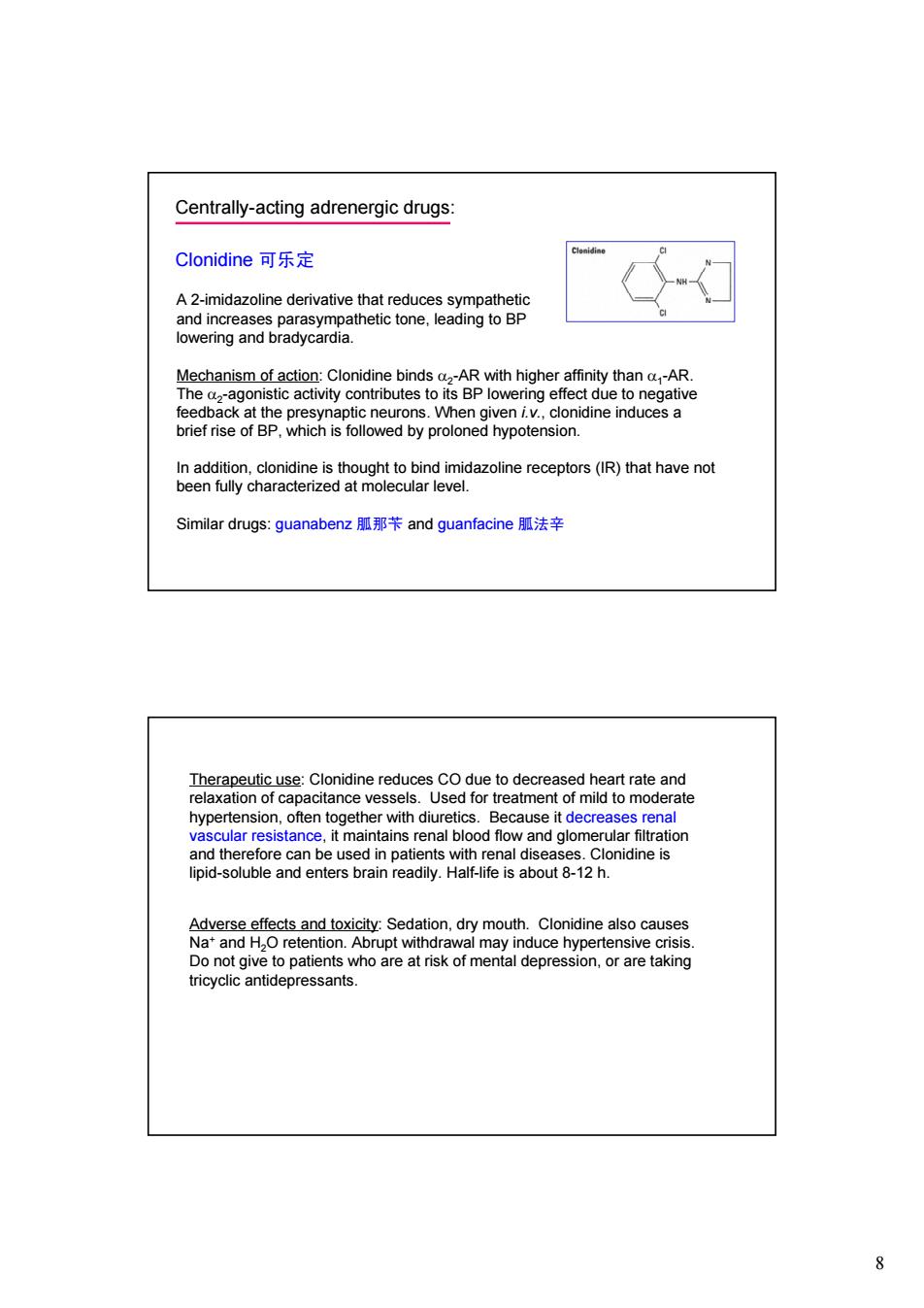正在加载图片...

Centrally-acting adrenergic drugs: Clonidine可乐定 A 2-imidazoline derivative that reduces sympathetic and increases parasympathetic tone,leading to BP lowering and bradycardia. Mechanism of action:Clonidine binds a2-AR with higher affinity than a-AR. The a-agonistic activity contributes to its BP lowering effect due to negative feedback at the presynaptic neurons.When given i.v.,clonidine induces a brief rise of BP,which is followed by proloned hypotension. In addition,clonidine is thought to bind imidazoline receptors(IR)that have not been fully characterized at molecular level. Similar drugs:guanabenz胍那苄and guanfacine胍法辛 Therapeutic use:Clonidine reduces CO due to decreased heart rate and relaxation of capacitance vessels.Used for treatment of mild to moderate hypertension,often together with diuretics.Because it decreases renal vascular resistance,it maintains renal blood flow and glomerular filtration and therefore can be used in patients with renal diseases.Clonidine is lipid-soluble and enters brain readily.Half-life is about 8-12 h. Adverse effects and toxicity:Sedation,dry mouth.Clonidine also causes Nat and H2O retention.Abrupt withdrawal may induce hypertensive crisis. Do not give to patients who are at risk of mental depression,or are taking tricyclic antidepressants. 88 Centrally-acting adrenergic drugs: A 2-imidazoline derivative that reduces sympathetic and increases parasympathetic tone, leading to BP lowering and bradycardia. Mechanism of action: Clonidine binds α2-AR with higher affinity than α1-AR. The α2-agonistic activity contributes to its BP lowering effect due to negative feedback at the presynaptic neurons. When given i.v., clonidine induces a brief rise of BP, which is followed by proloned hypotension. In addition, clonidine is thought to bind imidazoline receptors (IR) that have not been fully characterized at molecular level. Similar drugs: guanabenz 胍那苄 and guanfacine 胍法辛 Clonidine 可乐定 Therapeutic use: Clonidine reduces CO due to decreased heart rate and relaxation of capacitance vessels. Used for treatment of mild to moderate hypertension, often together with diuretics. Because it decreases renal vascular resistance, it maintains renal blood flow and glomerular filtration and therefore can be used in patients with renal diseases. Clonidine is lipid-soluble and enters brain readily. Half-life is about 8-12 h. Adverse effects and toxicity: Sedation, dry mouth. Clonidine also causes Na+ and H2O retention. Abrupt withdrawal may induce hypertensive crisis. Do not give to patients who are at risk of mental depression, or are taking tricyclic antidepressants